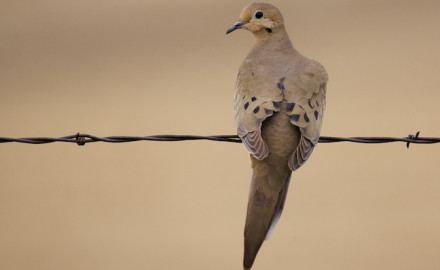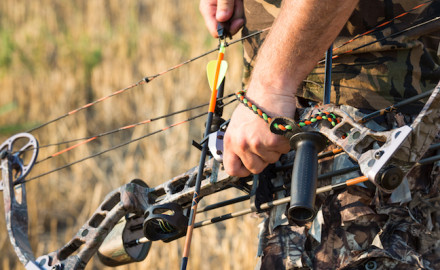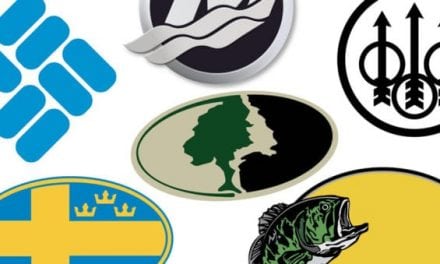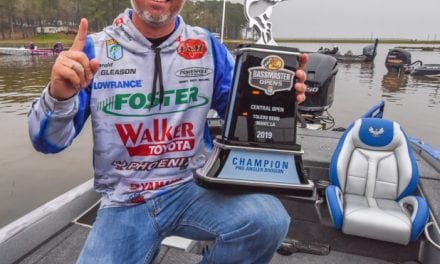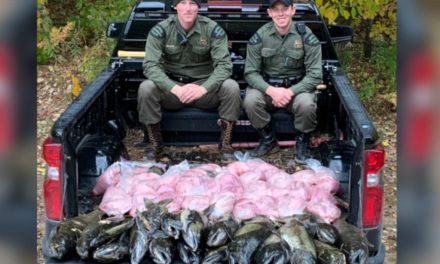Peach State Fall Hunting And Fishing
By Eric Chaney
By October, fall has arrived in the Peach State and the trees have exploded into a riot of red, gold and brown. Many of Georgia’s hunters are focused on another color, though — the white flash of a tail.
However, since not everyone is a deer hunter, it is good that Georgia has plenty of other outdoor pursuits, from black bears to redfish to squirrels and more, especially in October.
LOADED FOR BEAR
Bear hunting may bring to mind men in buckskins chasing grizzlies across the snowy slopes of the Rockies or the islands off Alaska. But Georgia has a thriving bear population, and hunting season generally falls in October. South Georgia in particular produces some monsters — Leta Carter shot a 600-pound behemoth near the Okefenokee Swamp in 2016.
South Georgia black bears are largely vegetarians, using a variety of habitats depending on food — pine flatwoods for palmetto, gallberry, blueberry and other shrub fruits; swamps for blackgum fruit; and wetlands in general for any animal foods they can find.
Much of south Georgia’s bear hunting is done on private land, but Georgia Department of Natural Resources bear biologist Greg Nelms says there are opportunities at Dixon Memorial Wildlife Management Area.
“I recommend a lot of scouting beforehand just to get familiar with the area,” Nelms said. “Typically, during our season the bears are in or along edges of swampy areas. Their most preferred food then is blackgum fruit and secondly saw palmetto berries.”
At Dixon, hunters have a choice of three archery days, six primitive weapons days and three modern firearm hunting days. And hunting with dogs is allowed in several counties, but Nelms recommends still-hunting, along with a lot of patience.
“It may take a few years to get your bear, especially hunting on public land,” Nelms said.
Once a bear is harvested, it must be checked and tagged with the DNR, but getting a kill from the field to the car is a bit different, too.
“One of the biggest differences in hunting here is the heat, and the inaccessibility of a lot of the land,” Nelms said. “Dragging a deer out is one thing but getting a 400-pound bear out of some of these swamps requires hours with typically several people involved.”
In addition to a regular hunting license, hunters need a Big Game License or an Honorary, Sportsman’s or Lifetime Sportsman’s License. Residents and non-residents under the age of 16 are exempt from the Big Game license requirement.
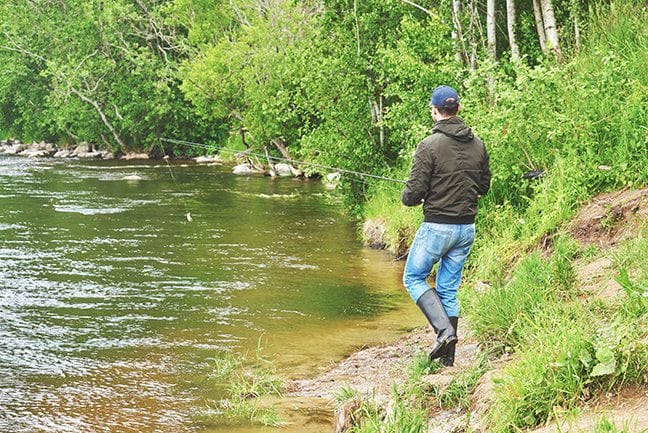
Photo Courtesy of Shutterstock
PUBLIC FISHING AREAS
Due to changes in the rules, Georgia’s nine available public fishing areas are now open seven days a week. That’s good news for folks in central Georgia, where there are three public fishing areas clustered within an hour’s drive of each other. Flat Creek, Dodge County and Ocmulgee public fishing areas fall within Houston, Dodge and Bleckley/Pulaski counties, respectively, and all are stocked with at least four different species.
To fish any of these areas, anglers 16 and older must possess a valid fishing license and a valid Wildlife Management Area license.
Flat Creek is a 102-acre public fishing lake located south of Perry, where anglers can go after bluegill, redear sunfish, channel catfish, largemouth bass and crappie. The lake, which can be accessed by bank or boat, is intensively managed to maximize fishing success. Less than three miles off I-75, Flat Creek is one of the most easily accessible public fishing areas in the entire state.
Lake levels were low in October last year, but according to GDNR reports, the overall fishing was still pretty good. The catfish bite was strong on red wigglers and chicken livers, and anglers with small boats also did well with dark colored worms, especially plum, watermelon and pumpkinseed.
Plenty of people were catching bream as well, mostly on Carolina-rigged worms near cover and in shallower water during a full moon.
Just 45 minutes down the road is Ocmulgee PFA, which offers a 106-acre lake tucked within the boundaries of Ocmulgee WMA. All of the same species are stocked except catfish, and the lake features a boat ramp and two fishing piers for land-based fishermen.
Ocmulgee PFA has been closed since 2012, when GDNR officials noticed water draining into the aquifer below and endangering the fish population. But the area is set to reopen in 2017, after the General Assembly approved $2.3 million to repair the lake. Biologists are waiting for the lake to fill to acceptable levels before reopening and restocking.
Even if the public fishing area is closed, the WMA may be worth a visit to check out the nature trail or the archery and firearms shooting ranges.
Another 40 minutes down the road is Dodge County PFA, located on 444 acres southeast of Eastman. Gently rolling terrain surrounds 104-acre Steve Bell Lake, which features numerous coves, points and shallow creek channels.
The lake, which boasts the same species of fish found at Flat Creek, also has some standing timber and submerged structures to attract fish. The GPS data for submerged fish attractors is available at www.gadnr.org and is compatible with most GPS brands, including Lowrance, Humminbird, Garmin and Magellan.
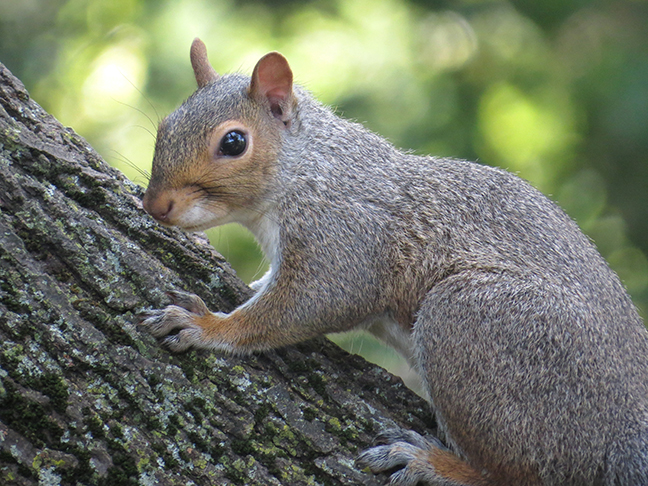
Photo Courtesy of Shutterstock
SQUIRRELS
Those who never tried small-game hunting are missing out on one of Georgia’s traditional hunting pursuits. Squirrels are a popular game species in Georgia, and there are plenty of places to hunt them in the north Georgia mountains.
Squirrels are a great way to introduce kids to the sport of hunting. They have keen senses that force a hunter to practice good field craft, and they can be taken with scoped .22 rifles, easy for young hunters to handle.
North Georgia squirrel hunters have literally hundreds of thousands of options. The 860,00-acre Chattahoochee-Oconee National Forest has large tracts hardwoods that bushytails like because of acorn production. The 17,300 acres at Lake Russell WMA are composed almost entirely of the same type of habitat.
Squirrel season starts in August and lasts through most of February, with hunters legally taking 12 squirrels a day.
CHASING REDS
By fall, the trees in the Peach State are brilliant gold and red, but in-the-know outdoorsmen head for the coast to chase the only red that matters in October — redfish.
“There are few fish in saltwater as visually appealing as a copper-colored redfish with a tail trimmed in baby blue,” said Spud Woodward, GDNR biologist who has spent three decades studying redfish around Georgia’s barrier islands. “Plus the fish fight hard, and the keeper-size ones are delicious table fare.”
According to Woodward, there are actually three unique redfish bites that anglers can target in October — yearlings of 14 to 18 inches, 2- to 3-year-olds, which run between 20 to 27 inches, and the big bull reds that top 27 inches.
“I enjoy them all,” Woodward said, “but in October I focus on the bull reds. Many people never have a chance to catch a 30-pound fish, but when conditions are right it’s possible to catch dozens of 30-pound-plus bull reds on a single trip.”
Bull reds can typically be found in deep holes and nearby submerged shoals in the larger tidal waterways, and on sandbars and shoals at the inlets between the estuaries and open Atlantic Ocean. Woodward fishes the submerged shoals north of the St. Simons ship channel and east of St. Simons Island.
Use a whole fresh menhaden or a chunk of mullet or whiting on a heavy duty Carolina rig — a 3-ounce egg sinker is placed on the mainline above a plastic bead and 75-pound-test swivel. The terminal rig is an 18-inch section of 60-pound-test monofilament tipped with a circle hook with a minimum of a 1/2-inch gap between the point and shank.
Woodward fishes yearlings with the same tackle he uses for spotted seatrout — 30-pound-test braid, a depth-adjustable slip float rigged above the proper weight for the size of float on a 20-pound-test leader, with a 2/0 Kahle (wide bend) style hook.
For yearling reds, Woodward suggests targeting the oyster reefs and creek mouths along the shoreline of the Frederica River, Brunswick River and Jekyll Creek.
“Yearling reds are not finicky about their diet,” Woodward said. “A live shrimp, finger mullet or mud minnow presented around oyster reefs, grassy points and channel edges will draw a vicious strike when the fish are there. The lower stages of the twice-daily tide are usually best as the fish are more concentrated in their habitat.”
The 2- to 3-year-old fish can often be found in the same habitat as their smaller cousins during lower stages of the tide, but will venture onto the flooded marsh during high tide. Target the flooded marsh on the west side of Jekyll Creek and north of the causeway connecting the mainland to Jekyll Island. Here, casting accuracy is important. Woodward suggests using a medium-action spinning outfit spooled with 30-pound-test braid with a 2-foot, 20-pound-test fluorocarbon leader. His terminal rig is a Gulp jerk shad rigged weedless with a swimbait hook that has a weight on the shank and the twist lock at the hook eye.
“The additional weight helps with casting distance and keeps the bait tracking straight on the retrieve,” Woodward said. “Rigging weedless is necessary as the fish are often in thick marsh grass foraging for fiddler crabs.”
Fishing the flooded marsh is a two- or three-hour experience, as the fish are only on the flooded marsh when the tide is high. Slowly pole boats while looking for tails out of the water and bulges of water as fish push through the shallows. Baitfish and shrimp skipping across the water’s surface is a good sign.
There are also places to fish that don’t require a boat. The St. Simons pier produces catches of bull reds, and the Gould’s Inlet area, accessible by foot, produces catches of reds for surf fishermen. The old bridge sections at Jekyll Creek, accessible from the causeway connecting the mainland and Jekyll Island, are good locations to try for yearling reds.
Dove Hunting: Georgia’s Winged Bullets
In many ways, the dove opener is more of a social get-together, with family and friends gathering for fun and food…
Stick & String: Bowhunting Deer in Georgia
September is a great time for Georgia bowhunters. Months spent scouting…
The post Peach State Fall Hunting And Fishing appeared first on Game & Fish.


